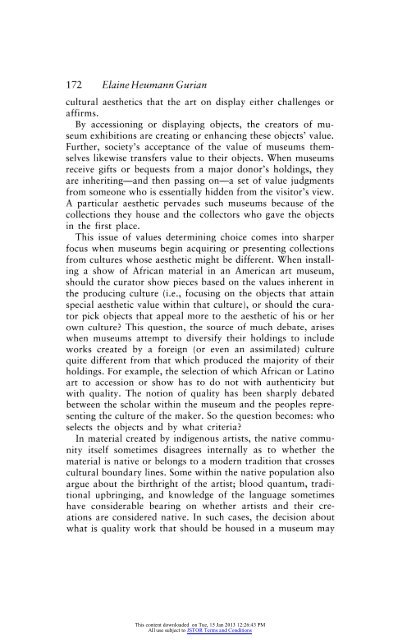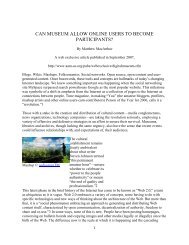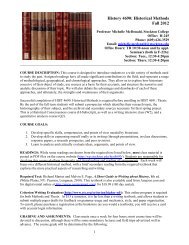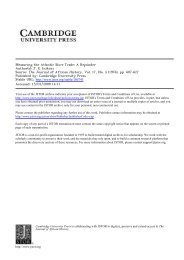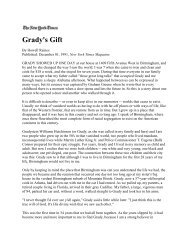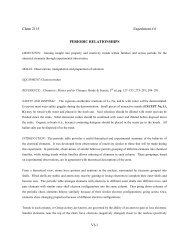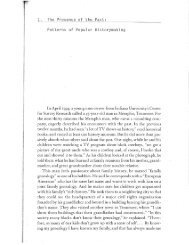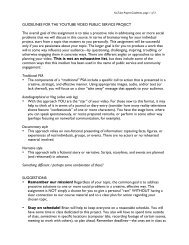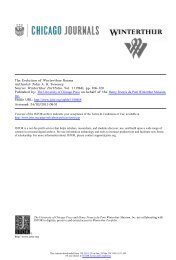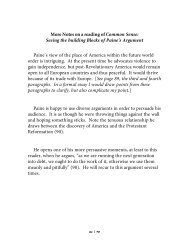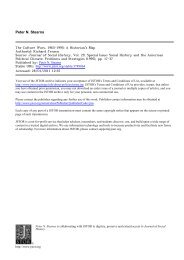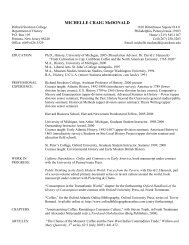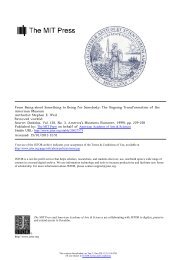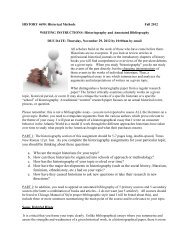What Is the Object of This Exercise? A Meandering Exploration of ...
What Is the Object of This Exercise? A Meandering Exploration of ...
What Is the Object of This Exercise? A Meandering Exploration of ...
You also want an ePaper? Increase the reach of your titles
YUMPU automatically turns print PDFs into web optimized ePapers that Google loves.
172 Elaine Heumann Gurian<br />
cultural aes<strong>the</strong>tics that <strong>the</strong> art on display ei<strong>the</strong>r challenges<br />
affirms.<br />
By accessioning<br />
or<br />
displaying objects, <strong>the</strong> creators <strong>of</strong> mu<br />
seum exhibitions are<br />
creating<br />
or<br />
enhancing <strong>the</strong>se objects' value.<br />
Fur<strong>the</strong>r, society's acceptance <strong>of</strong> <strong>the</strong> value <strong>of</strong> museums <strong>the</strong>m<br />
selves likewise transfers value to <strong>the</strong>ir objects. When museums<br />
receive gifts<br />
or<br />
bequests from a<br />
major donor's holdings, <strong>the</strong>y<br />
are<br />
inheriting?and <strong>the</strong>n passing<br />
on?a set <strong>of</strong> value judgments<br />
from someone who is essentially hidden from <strong>the</strong> visitor's view.<br />
A particular aes<strong>the</strong>tic pervades such museums because <strong>of</strong> <strong>the</strong><br />
collections <strong>the</strong>y house and <strong>the</strong> collectors who gave <strong>the</strong> objects<br />
in <strong>the</strong> first place.<br />
<strong>This</strong> issue <strong>of</strong> values determining choice comes into sharper<br />
focus when museums<br />
begin acquiring<br />
or<br />
presenting collections<br />
from cultures whose aes<strong>the</strong>tic might be different. When install<br />
ing a show <strong>of</strong> African material in an American art museum,<br />
should <strong>the</strong> curator show pieces based on <strong>the</strong> values inherent in<br />
<strong>the</strong> producing culture (i.e., focusing<br />
on <strong>the</strong> objects that attain<br />
special aes<strong>the</strong>tic value within that culture),<br />
or should <strong>the</strong> cura<br />
tor<br />
pick objects that appeal<br />
more to <strong>the</strong> aes<strong>the</strong>tic <strong>of</strong> his or her<br />
own culture? <strong>This</strong> question, <strong>the</strong> source <strong>of</strong> much debate, arises<br />
when museums attempt to<br />
diversify <strong>the</strong>ir holdings<br />
to include<br />
works created by a<br />
foreign (or even an assimilated) culture<br />
quite different from that which produced <strong>the</strong> majority <strong>of</strong> <strong>the</strong>ir<br />
holdings. For example, <strong>the</strong> selection <strong>of</strong> which African or Latino<br />
art to accession or show has to do not with au<strong>the</strong>nticity but<br />
with quality. The notion <strong>of</strong> quality has been sharply debated<br />
between <strong>the</strong> scholar within <strong>the</strong> museum and <strong>the</strong> peoples repre<br />
senting <strong>the</strong> culture <strong>of</strong> <strong>the</strong> maker. So <strong>the</strong> question becomes: who<br />
selects <strong>the</strong> objects and by what criteria?<br />
In material created by indigenous artists, <strong>the</strong> native commu<br />
nity itself sometimes disagrees internally<br />
as to whe<strong>the</strong>r <strong>the</strong><br />
material is native or<br />
belongs<br />
to a modern tradition that crosses<br />
cultural boundary lines. Some within <strong>the</strong> native population also<br />
argue about <strong>the</strong> birthright <strong>of</strong> <strong>the</strong> artist; blood quantum, tradi<br />
tional upbringing, and knowledge <strong>of</strong> <strong>the</strong> language sometimes<br />
have considerable bearing<br />
on whe<strong>the</strong>r artists and <strong>the</strong>ir cre<br />
ations are considered native. In such cases, <strong>the</strong> decision about<br />
what is quality work that should be housed in a museum may<br />
<strong>This</strong> content downloaded on Tue, 15 Jan 2013 12:26:43 PM<br />
All use subject to JSTOR Terms and Conditions<br />
or


